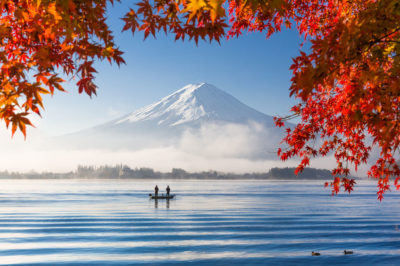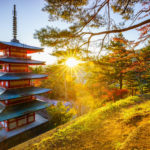Can you drink in public in Japan?

Can you drink in public in Japan?
In Japan, drinking alcohol in public is generally legal and culturally accepted, but there are important nuances and local regulations to be aware of. Understanding the broader context of alcohol consumption, from legal frameworks to social expectations, can help visitors avoid faux pas and enjoy their time more fully. Japan’s unique combination of legal permissiveness and strong social norms around behavior makes for an interesting and sometimes surprising experience for tourists.
🍶 Is Public Drinking Legal in Japan?
Yes, it is legal to consume alcohol in public spaces such as parks, streets, beaches, riverbanks, and even on certain long-distance trains in Japan. This openness to public drinking contrasts sharply with many Western countries, including the United States, the United Kingdom, and Australia, where open container laws strictly prohibit drinking alcohol outside of licensed establishments or designated areas. In Japan, it’s not uncommon to see people enjoying a beer during a hanami (cherry blossom viewing) picnic, sipping sake at a summer matsuri (festival), or even cracking open a can of chu-hi on a bench after work.
Convenience stores across the country stock a wide range of alcoholic beverages—beer, sake, wine, whiskey, and more—and are open 24 hours a day, making it easy for anyone to grab a drink at any time. Public parks, riverbeds like those in Kyoto and Osaka, and coastal promenades are popular locations for locals to enjoy casual social drinking.
However, just because it’s legal doesn’t mean all behavior is acceptable. Public drinking in Japan exists within a cultural framework that emphasizes discretion, quietness, and not inconveniencing others. Drunken behavior that might be tolerated or even laughed off in some other countries is generally met with disapproval in Japan.
🏙️ Local Restrictions: Shibuya’s Public Drinking Ban
While public drinking is generally permitted throughout Japan, certain municipalities have started introducing local restrictions in response to recurring problems associated with heavy or rowdy drinking, especially in entertainment districts. One of the most notable examples is Tokyo’s Shibuya Ward, a district famous for its nightlife, youth culture, and crowds.
Since 2019, Shibuya has introduced temporary bans on public drinking during major holidays such as Halloween and New Year’s Eve due to unruly behavior, property damage, and excessive litter. These temporary measures became permanent in October 2024, when the local government implemented a year-round ban on public drinking from 6 p.m. to 5 a.m. in areas around Shibuya Station. This decision was prompted by ongoing issues and pressure from residents and businesses seeking a more peaceful and orderly environment.
The ban is not enforced through fines or arrests; instead, it depends on social cooperation and police presence to maintain order. The local authorities believe that simply having clear rules and police politely reminding people is enough to deter misconduct. Other areas—such as popular parks or tourist-heavy zones—may adopt similar rules if public drinking becomes disruptive.
🤝 Cultural Etiquette: Drink Responsibly
Even in places where public drinking is legal, Japanese society holds certain expectations about how people should behave while consuming alcohol. Japan places a strong cultural emphasis on moderation, harmony, and not disturbing others. Public drunkenness that involves loud talking, singing, vomiting, or aggression is heavily frowned upon and can lead to public shame or even police intervention if it escalates.
There is also an etiquette around how and when people drink. In group settings, it’s customary to pour drinks for one another and wait until everyone has a full glass before saying “kanpai” (cheers). Drinking alone in public is not necessarily looked down upon, but doing so to the point of visible inebriation can be seen as concerning or inappropriate.
Another important cultural point is that it’s generally considered rude to eat or drink while walking. Instead, people often stand near vending machines, convenience stores, or sit on benches to consume their drinks—even something as simple as canned coffee or bottled tea. This same practice extends to alcoholic beverages. Drinking while strolling around is viewed as inconsiderate and messy, even if it is technically allowed.
🧳 Tips for Tourists
If you’re a visitor planning to drink in public while exploring Japan, consider the following tips to ensure you stay respectful and within the bounds of both the law and local customs:
- Check Local Regulations: Some neighborhoods or cities may have special ordinances that ban public drinking at certain times or in specific locations, especially around stations or tourist hotspots. Always check signage or ask locals.
- Be Discreet: Choose quieter, scenic areas like riversides, coastal walkways, or picnic spots to enjoy your drink. Avoid chugging alcohol on busy streets or inside shopping districts.
- Dispose of Trash Properly: Japan takes cleanliness seriously. You’ll often need to carry your trash with you, as public garbage bins are rare. Look for recycling stations at convenience stores or train stations for proper disposal.
- Avoid Trains and Buses: While technically allowed on some long-distance trains, drinking on commuter trains or buses—especially during rush hours—is seen as inconsiderate and rude.
- Mind Your Alcohol Tolerance: Japanese alcoholic beverages can be deceptively strong. Shochu, for example, has a higher alcohol content than beer or wine and is sometimes served in fruit-flavored cans that mask its strength.
- Join Local Traditions: Participating in events like hanami or fireworks festivals often includes group drinking. These are excellent opportunities to experience Japanese alcohol culture in a festive, acceptable setting.
🚫 Drinking and Driving
Japan has some of the strictest drunk-driving laws in the world, with a complete zero-tolerance approach. It is illegal to operate a motor vehicle, scooter, moped, or even a bicycle if you have consumed any amount of alcohol. The consequences for violating these laws are severe and can include imprisonment of up to five years, hefty fines (up to one million yen), driver’s license revocation, and criminal charges.
Additionally, anyone who serves alcohol to a person they know will be driving can also be held legally responsible. This includes restaurant staff, friends, and even family members. Police occasionally set up sobriety checkpoints and will not hesitate to arrest both drivers and those who enabled them.
Due to these strict laws, many people opt to take public transportation, taxis, or designated driver services (known in Japan as “daiko” services), where a professional driver will drive your car home while you ride along in a follow vehicle.
🎉 Conclusion
Public drinking in Japan is legally permissible and deeply embedded in certain cultural events, leisure habits, and everyday life. Whether you’re joining locals for a lively hanami picnic, sipping beer with colleagues after work at the riverside, or enjoying sake during a regional festival, alcohol can be an enjoyable part of your experience in Japan.
However, that freedom is accompanied by a strong cultural emphasis on discretion, courtesy, and not disturbing the peace. With an understanding of local regulations and cultural expectations, tourists can fully enjoy Japan’s relaxed alcohol laws without encountering trouble.
Ultimately, it’s not just about legality—it’s about fitting in respectfully with Japanese society. Drinking in public can be a memorable and pleasant experience as long as it’s done with mindfulness and care.










